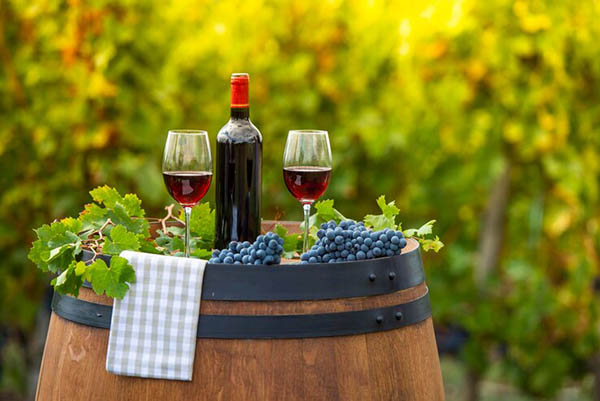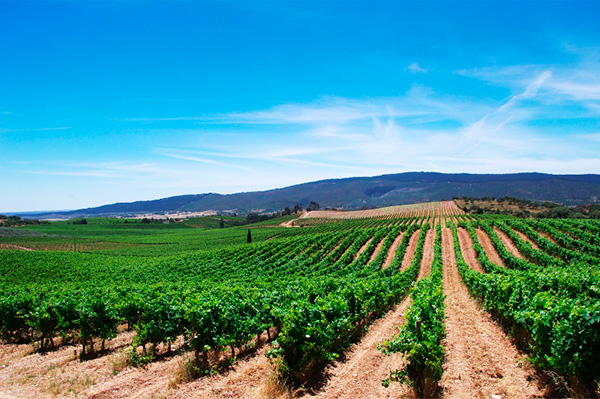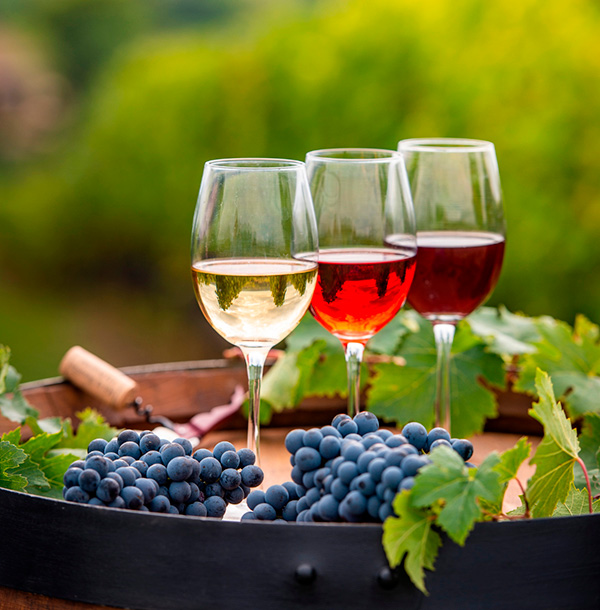Introduction
Alentejo, a sun-drenched land in Portugal, is not only famous for its serene beauty and rich history but also for its exceptional wines. This region, occupying more than a third of Portugal’s mainland, has undergone a renaissance in winemaking, marrying ancient practices with modern technology to produce wines recognized worldwide. Beyond the vineyards, Alentejo is a canvas of sprawling plains, ancient towns, and an inviting climate that makes it a haven for both wine enthusiasts and travelers seeking tranquility.
1st – What Alentejo Wine is Like

Alentejo wine encapsulates the essence of the region’s terroir. The hot, dry climate, paired with a variety of soils ranging from limestone to granite and clay, provides the perfect conditions for producing wines with intense flavors and rich aromas. Alentejo is particularly renowned for its robust red wines, which are powerful and full-bodied, reflecting the heat and character of the region. The wines typically exhibit ripe, fruity flavors with a tendency towards jammier notes, making them immensely enjoyable and sought-after.
The region is also home to the world’s largest cork plantation, underscoring its integral role in both the wine and cork industries. The diversity in Alentejo’s wines is a testament to the varied terroir across its vast landscape, offering a range of styles from light and fresh to rich and intense. Key red grape varieties include Aragonez, Trincadeira, and Alicante Bouschet, while for whites, Antão Vaz and Arinto lead the charge, producing wines that are aromatic and slightly acidic, with tropical fruit undertones.
Winemaking in Alentejo is a blend of tradition and innovation, with many wineries utilizing ancient practices such as fermenting wine in clay jars, alongside modern techniques. This duality ensures the preservation of Alentejo’s winemaking heritage while embracing advancements that enhance wine quality.
Alentejo’s wineries are destinations in themselves, offering tours and tastings that immerse visitors in the region’s wine culture. From family-owned estates with centuries-old traditions to innovative producers practicing organic viticulture, the wineries of Alentejo showcase the depth and diversity of Portuguese winemaking. Notable mentions include Casa De Sabicos, Herdade Da Calada, and Quinta Do Zambujeiro, each presenting unique experiences that reflect their distinct approach to winemaking and hospitality.
Alentejo wines are a reflection of the region’s soul: deeply rooted in history, yet vibrant and evolving. Whether you’re a connoisseur or a casual wine drinker, Alentejo offers an array of wines that promise pleasure and invite discovery. The allure of Alentejo wine lies not just in the glass, but in the journey through one of Portugal’s most captivating regions, where every sip tells the story of its land and people.
2nd – How to Pair Alentejo Wine

Pairing Alentejo wines with food is an art that enhances the dining experience, bringing out the best in both the wine and the meal. Here’s how to perfectly complement Alentejo wines with various dishes:
1st – Red Meat
Alentejo red wines, known for their robust and full-bodied nature, pair exceptionally well with red meats. A wine like Esporão Reserva, a blend of Trincadeira, Aragonez, Alicante Bouschet, and Cabernet Sauvignon, offers lush black fruit flavors and round tannins that complement the richness of red meat dishes. The oak aging of these wines adds a complexity that can stand up to the intense flavors of grilled or roasted meats.
2nd – Fish
While red wines are the stars of Alentejo, the region also produces exceptional white wines that pair beautifully with fish. For dishes featuring bacalhau (cod) or other seafood, full-bodied whites or light to medium reds from Alentejo can be a suitable match, especially if they’re not too fruity. Arinto, Loureiro, Antão Vaz, and other white varieties from Alentejo, with their acidity and aromatic profiles, can complement the richness of fish dishes, enhancing their natural flavors without overpowering them.
3rd – Cheeses and Alentejo Wine
Alentejo wines also make an excellent pairing with cheese. The region’s robust reds, with their tannic structure and fruit-forward character, can balance the richness of cheeses, especially aged ones. White Alentejo wines, with their crisp acidity and fruity notes, pair well with softer cheeses, creating a delightful contrast that highlights the nuanced flavors of both the wine and the cheese.
4th – Game Meat
Game meat, with its distinctive flavors, requires a wine that can complement its intensity without overshadowing it. Alentejo reds, such as those made from Alicante Bouschet or a blend including Syrah and Aragonez, with their deep fruit flavors, spice notes, and chewy tannins, are excellent choices. These wines can enhance the gamey taste of the meat, making for a harmonious and satisfying pairing.
Exploring the pairings of Alentejo wines with different foods is a journey that can elevate the culinary experience, offering a harmonious blend of flavors that celebrate the richness of this beautiful Portuguese region. Whether you’re enjoying a casual meal or a festive occasion, there’s an Alentejo wine to complement every dish, enhancing the flavors and bringing joy to the table.
3rd – Main Wine Grapes in Alentejo
The Alentejo region of Portugal is blessed with a diverse palette of grape varieties, each contributing to the rich tapestry of flavors found in its wines. Understanding these main wine grapes provides insight into the character and diversity of Alentejo wines.
Red Grapes
- Alicante Bouschet: A French grape that has found a particular home in Alentejo, Alicante Bouschet is known for producing deep, color-rich wines with robust tannins and flavors of dark fruits. It’s often used in blends to add body and color.
- Aragonez (Tempranillo): Known locally as Aragonez, and elsewhere as Tempranillo, this grape is versatile and produces wines that can range from soft and fruity to complex and age-worthy. It’s a key component in many of Alentejo’s acclaimed blends.
- Trincadeira: Also native to Portugal, Trincadeira adds a uniquely Portuguese character to Alentejo wines, offering spicy notes, floral aromas, and a bright acidity that can balance the richness of Alicante Bouschet and Aragonez.
- Castelão: Found throughout southern Portugal, Castelão brings red berry flavors and a rustic charm to blends, along with a balanced acidity and tannins that contribute to the longevity of the wines.
- Touriga Nacional: While more closely associated with the wines of the Douro Valley, Touriga Nacional also plays a significant role in Alentejo blends, contributing dense floral aromas and dark fruit flavors.
White Grapes
- Antão Vaz: The flagship white grape of Alentejo, Antão Vaz is prized for its ability to produce full-bodied wines with tropical fruit flavors and a creamy texture, often with a hint of minerality. It thrives in Alentejo’s warm climate, maintaining good acidity and balance.
- Arinto: Known for its high acidity, Arinto brings freshness and zing to Alentejo whites, with citrus and green apple flavors that add liveliness to blends or stand out on their own.
- Roupeiro (Siria): Roupeiro, or Siria, offers floral and citrus aromas, contributing to the aromatic complexity of Alentejo whites. It can produce wines that range from light and crisp to more textured and aromatic, depending on the vinification methods.
These grape varieties, among others, are the backbone of the Alentejo wine region, each adding its unique flavor profile and characteristics to the wines. The combination of these grapes, along with the diverse terroir of the region, allows Alentejo to produce a wide range of wine styles, from powerful reds and aromatic whites to complex blends that capture the essence of the region.
Alentejo’s approach to viticulture and winemaking, which often blends tradition with innovation, ensures that the unique qualities of these grape varieties are preserved and celebrated in each bottle. Whether exploring the robust reds or the refreshing whites of Alentejo, these main grape varieties offer a window into the soul of one of Portugal’s most esteemed wine regions.
4th – Discover the Alentejo Region and Its Terroir

The Alentejo region, sprawling across central and southern Portugal, is as rich in beauty as it is in viticultural heritage. This vast area is a patchwork of rolling hills, ancient cork forests, and olive groves, underlain by a mosaic of soil types and microclimates that contribute to the unique terroir of its wines.
Geography and Climate
Alentejo covers approximately one-third of Portugal, making it one of the country’s largest and most varied wine regions. Its geography is characterized by wide plains and undulating hills, stretching from the Tagus River in the north to the Algarve in the south, and from the Atlantic coast in the west to the Spanish border in the east. This diversity of landscapes is matched by a variety of soil types, including limestone, schist, granite, and clay, each imparting distinct characteristics to the wines (WineTourism.com) (Vivino).
The climate of Alentejo is Mediterranean, marked by hot, dry summers and mild, wet winters. The region’s interior experiences more continental influences, with temperature extremes that can challenge grape growing but also contribute to the concentration and complexity of the wines. Coastal areas benefit from the cooling breezes of the Atlantic, moderating temperatures and lending a fresher, more balanced profile to the wines (Vivino).
Terroir and Its Influence
Alentejo’s terroir is a key factor in its winemaking success. The combination of climate, soil, and topography allows for the production of wines with a wide range of expressions. In areas with cooler, maritime influences and schist soils, wines tend to be more elegant and aromatic. Conversely, the hotter, drier areas with clay and limestone soils produce richer and more robust wines.
The diversity of the Alentejo terroir encourages the cultivation of a wide array of grape varieties, each finding its niche in the region’s varied landscape. The interaction between these grape varieties and the terroir results in wines that are a true reflection of their origin, showcasing the unique characteristics imparted by the Alentejo soil and climate.
In addition to its natural assets, Alentejo’s terroir is shaped by the human touch. Centuries of viticulture have honed the techniques used to cultivate vines in this challenging climate, including careful site selection, innovative water management practices, and sustainable farming methods that respect the delicate balance of the region’s ecosystem (Wine Tourism Portugal).
Exploration and Wine Tourism
Alentejo is not only a region to be studied but also to be experienced. Wine tourism in Alentejo offers an immersive journey through its landscapes, from historic estates and modern wineries to the ancient towns and villages that dot the countryside. Visitors can explore the diversity of Alentejo wines through tastings, vineyard tours, and wine-making workshops, gaining a deeper appreciation for the region’s winemaking tradition and the terroir that shapes its wines.
From the fortified towns of Évora and Monsaraz to the serene beauty of the Alqueva reservoir, Alentejo’s rich history and culture provide a captivating backdrop to its winemaking. The region’s gastronomy, characterized by dishes that blend rustic simplicity with rich flavors, perfectly complements its wines, offering a holistic experience of Alentejo’s terroir .
Discovering the Alentejo region and its terroir is an exploration of contrasts and harmonies, where ancient practices meet modern innovation, and where each vineyard tells the story of its unique piece of the earth. Through its wines, Alentejo invites a deeper understanding and appreciation of what makes this region one of Portugal’s most cherished treasures.
5th – A Unique Region in Wine Production

Alentejo stands out as a unique region in the world of wine for several reasons that go beyond its geographical and climatic conditions. The region’s commitment to tradition, combined with an openness to innovation and sustainability, sets Alentejo apart in the wine industry.
Tradition and Innovation
Alentejo’s winemaking roots stretch back centuries, with techniques passed down through generations. This deep respect for tradition is evident in practices such as the use of talhas (large clay pots) for fermentation, a method dating back to Roman times. However, what truly distinguishes Alentejo is how these age-old practices are seamlessly integrated with modern winemaking techniques. State-of-the-art wineries employ the latest in viticulture and oenology, from controlled fermentation processes to advanced aging methods, ensuring that each bottle of Alentejo wine represents both the past and the present.
Focus on Quality and Diversity
The winemakers of Alentejo prioritize quality over quantity, often opting for lower yields to ensure higher quality grapes. This focus is reflected in the diverse array of wines produced in the region, from bold reds and aromatic whites to innovative blends that defy traditional categorizations. The diversity is further enriched by the region’s wide range of grape varieties, both indigenous and international, allowing for an endless exploration of flavors and styles.
Sustainability and Respect for the Environment
Alentejo is also at the forefront of sustainable winemaking in Portugal. Many wineries have embraced organic farming practices, reducing or eliminating the use of synthetic pesticides and fertilizers. The region’s wine producers are keenly aware of the importance of water management, especially in an area prone to drought, and many have implemented innovative techniques to conserve water and reduce their environmental footprint.
The commitment to sustainability extends beyond the vineyards to include the wineries themselves, with several adopting solar power and other green technologies. This holistic approach to sustainability demonstrates Alentejo’s commitment to preserving its unique landscape and terroir for future generations.
Wine Tourism and Economic Impact
Wine tourism has become a vital part of Alentejo’s economy, attracting visitors from around the world to explore its vineyards, wineries, and historic towns. The region’s winemakers have embraced this opportunity, offering tours, tastings, and even accommodations that allow guests to immerse themselves in the Alentejo wine experience. This not only supports the local economy but also raises the international profile of Alentejo wines, contributing to their growing popularity and recognition on the global stage.
Alentejo’s unique blend of tradition and innovation, its focus on quality and sustainability, and its thriving wine tourism sector underscore the region’s distinctive position in the world of wine. These elements, combined with the natural beauty and rich history of the area, make Alentejo a must-visit destination for any wine lover and a model for wine production that balances respect for the past with a vision for the future.
6th – DO – Designation of Origin
The Denominação de Origem Controlada (DOC), or Designation of Origin, is a key aspect of Portugal’s wine regulation system, ensuring quality and authenticity within its diverse wine regions, including Alentejo. This designation not only signifies adherence to strict quality standards but also guarantees that the wines are produced in specific regions using traditional methods and grape varieties.
Alentejo DOC
In Alentejo, the DOC classification plays a crucial role in preserving the unique identity and heritage of the region’s wines. The Alentejo DOC encompasses eight sub-regions: Reguengos, Borba, Redondo, Vidigueira, Évora, Granja-Amareleja, Portalegre, and Moura. Each of these areas has its own distinctive climate, soil, and grape varieties, contributing to the diversity of Alentejo wines within the DOC framework.
The DOC system in Alentejo ensures that wines meet rigorous standards regarding grape varieties, viticulture practices, and winemaking techniques. For example, red wines from Alentejo must primarily utilize indigenous grape varieties such as Aragonez, Trincadeira, and Alicante Bouschet. Similarly, white wines often feature Antão Vaz, Arinto, and Roupeiro, among others. These regulations help maintain the regional characteristics that make Alentejo wines distinctive.
Impact of DOC on Quality and Recognition
The DOC designation has significantly impacted the quality and international recognition of Alentejo wines. By adhering to strict production criteria, winemakers in Alentejo can ensure the high quality of their wines, reflecting the region’s terroir and winemaking heritage. This commitment to quality has led to increased recognition and appreciation for Alentejo wines on the global stage, with numerous awards and accolades showcasing the region’s excellence in winemaking.
Moreover, the DOC status provides consumers with a guarantee of authenticity and quality, making it easier for wine enthusiasts to identify and enjoy the best of what Alentejo has to offer. This assurance of quality is especially important in a global market where consumers are increasingly seeking wines that are not only delicious but also representative of their origins.
Looking Forward
As Alentejo continues to evolve and innovate within the winemaking sector, the DOC designation remains a cornerstone of its identity. The region’s commitment to preserving its winemaking traditions while embracing new techniques and sustainability practices ensures that Alentejo DOC wines will continue to captivate and delight wine lovers around the world.
The balance between tradition and innovation, coupled with the stringent standards of the DOC system, positions Alentejo as a region that respects its past while looking forward to a bright and dynamic future in the world of wine.
7th – Red, Rosé, or White Alentejo Wine?

Choosing between red, rosé, and white wines from Alentejo is not merely a matter of color preference but an exploration into the diverse flavors and experiences that this rich Portuguese region has to offer. Each type of wine embodies the region’s terroir, winemaking traditions, and the unique characteristics of its grape varieties, offering a spectrum of taste experiences for every occasion.
Red Wines
Alentejo is perhaps best known for its red wines, which are celebrated for their depth, complexity, and richness. These wines typically feature a blend of indigenous grape varieties such as Alicante Bouschet, Aragonez (Tempranillo), and Trincadeira, among others. They are known for their dark fruit flavors, spice notes, and structured tannins, making them excellent companions to hearty meals, particularly dishes featuring red meat or game. Alentejo reds also possess a notable aging potential, developing additional layers of complexity over time.
White Wines
White wines from Alentejo, though less renowned globally than their red counterparts, are gaining acclaim for their vibrant acidity, aromatic complexity, and versatility. Made from grapes like Antão Vaz, Arinto, and Roupeiro, Alentejo whites range from crisp and refreshing to full-bodied and textured, often with notes of citrus, tropical fruit, and minerality. These wines are perfect for warm weather sipping, pairing beautifully with seafood, poultry, and light salads, or simply enjoyed on their own.
Rosé Wines
Rosé wines from Alentejo are a delightful middle ground, combining the refreshing qualities of white wines with some of the body and flavor characteristics of reds. Alentejo rosés are typically made from the same red grape varieties used in the region’s red wines, offering flavors of ripe berries, floral notes, and a crisp finish. These wines are perfect for a variety of occasions, from casual gatherings to more formal dining, and pair wonderfully with a wide range of foods, including grilled dishes, pasta, and Asian cuisine.
Conclusion
The choice between red, rosé, and white Alentejo wine depends on personal preference, the occasion, and the accompanying food. Each type offers a unique window into the soul of Alentejo, reflecting the diversity of its landscapes, the richness of its terroir, and the skill of its winemakers. Whether you lean towards the robust elegance of Alentejo reds, the bright freshness of its whites, or the versatile charm of its rosés, Alentejo has a wine to enchant every palate.
Exploring the wines of Alentejo is an adventure in taste that promises to deepen your appreciation for one of Portugal’s most esteemed wine regions. The decision between red, rosé, or white is not just about color—it’s about discovering the nuances and stories each bottle holds within.
